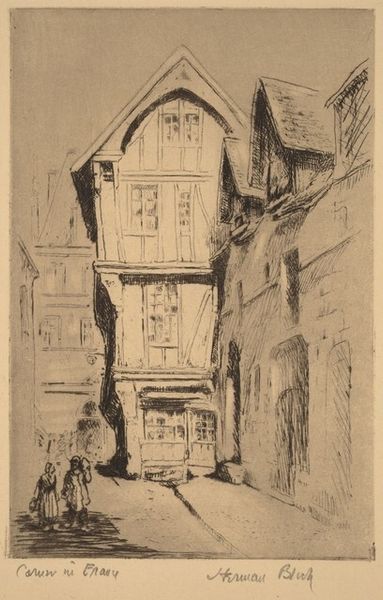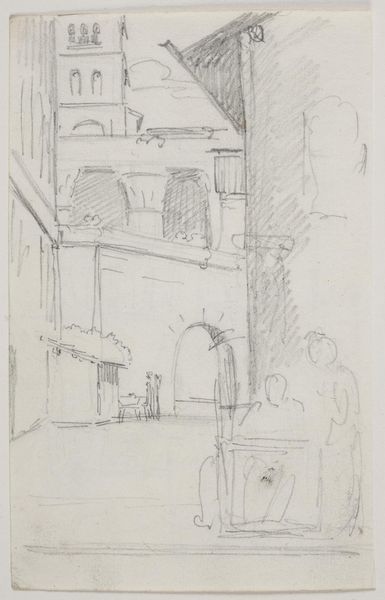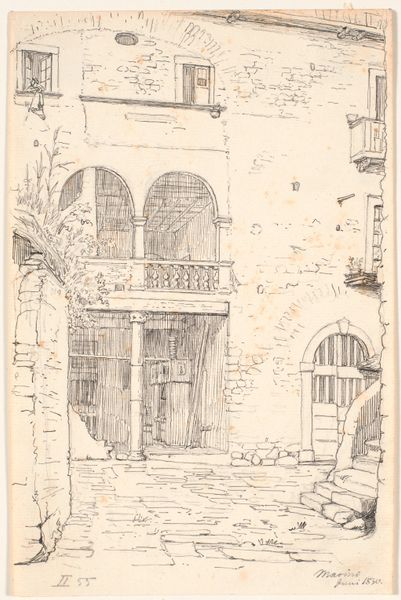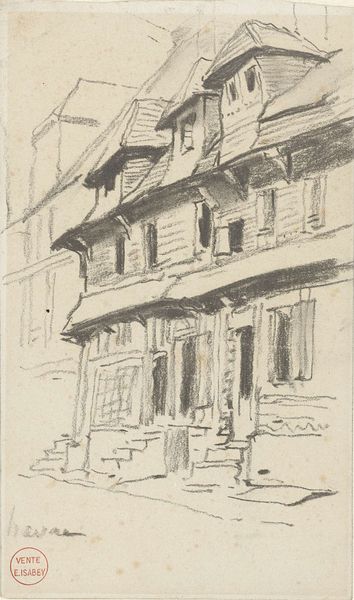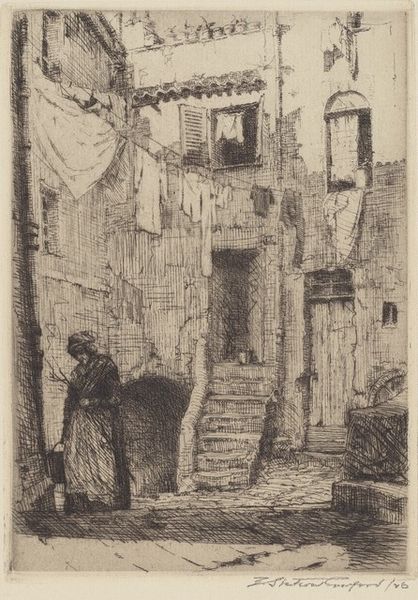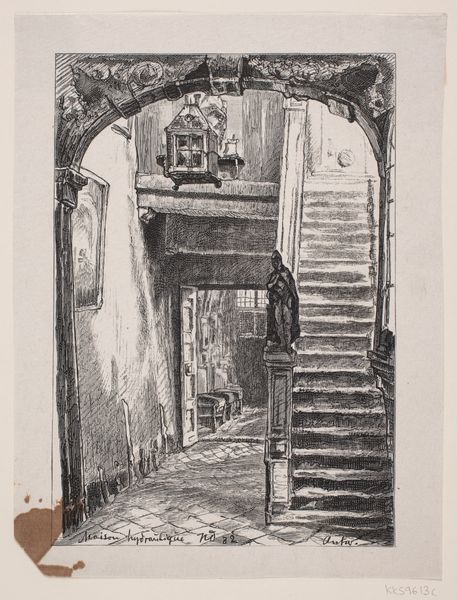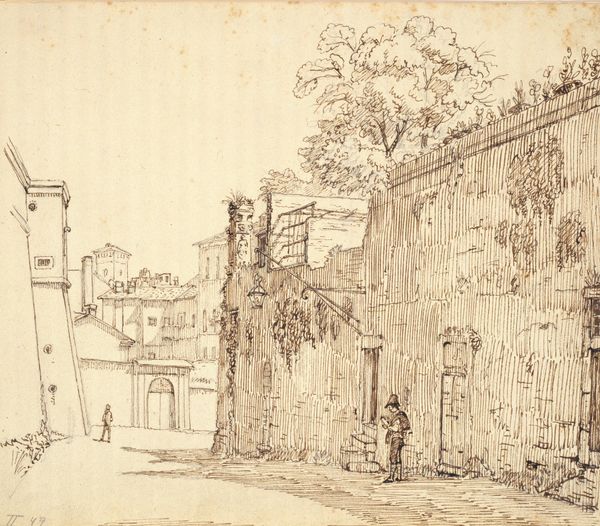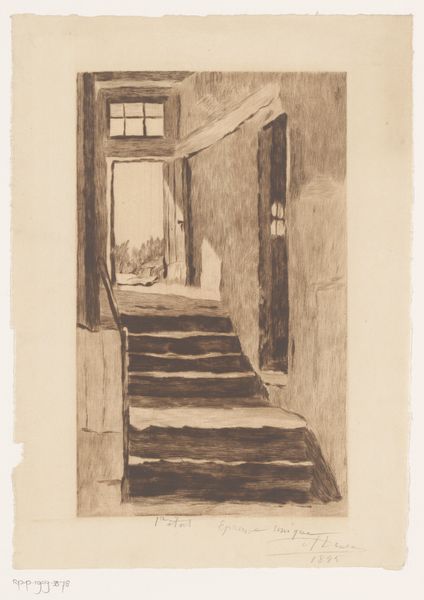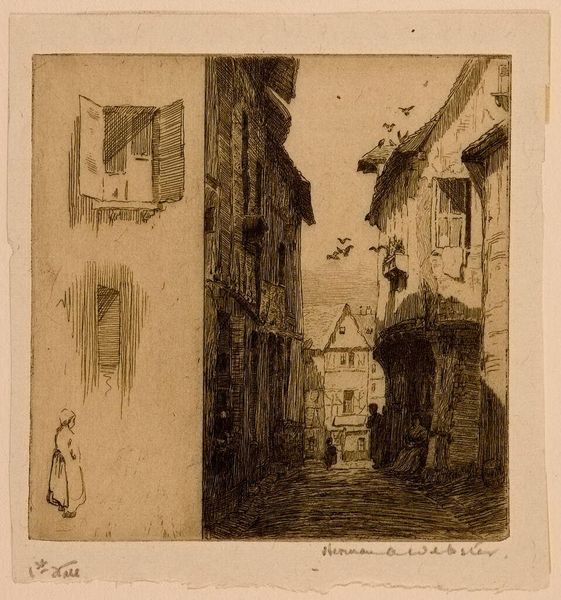
drawing, ink, architecture
#
drawing
#
toned paper
#
pencil sketch
#
etching
#
ink
#
romanticism
#
architecture drawing
#
cityscape
#
genre-painting
#
architecture
Dimensions: height 195 mm, width 140 mm
Copyright: Rijks Museum: Open Domain
Editor: Jan Hulswit's "Gezicht in een steegje," created sometime between 1776 and 1822, uses ink and pencil on toned paper to depict a narrow alleyway. It's so evocative, I feel like I could step right into that shadowy space. What draws your eye to this piece? Curator: What strikes me is the artist’s choice to represent an alleyway, a liminal space often overlooked. Historically, cityscapes, especially those that embraced romanticism like this one, tended to focus on grand boulevards or recognizable landmarks that reflected civic pride or power. Hulswit's alley offers a different perspective. Why represent this rather than say a bustling marketplace? What statement is being made by showcasing this quieter, perhaps less celebrated, part of the urban experience? Editor: It's definitely unexpected. I guess it makes me wonder about the undercurrents of urban life, things easily missed. The lone figure also makes me wonder, is it an intentional social statement, or pure aesthetic choice? Curator: It’s probably a mix, as Romanticism was a broad church of sorts. This work could very well allude to a sense of alienation felt during periods of intense urbanization, maybe pointing at who has the power and place within those new, growing, changed environments. Where did that person come from? What did that architecture, new or old, mean for them? Hulswit invites us to observe a narrative unfolding in the periphery of societal structures. Editor: So, rather than a literal representation of Amsterdam, Hulswit uses this alley to provoke deeper thoughts about the experience of living there? Curator: Exactly. He directs our attention to the nuanced narratives unfolding in spaces typically relegated to the background, encouraging critical contemplation. The alley here is an actor on its own, a location freighted with meaning for that passerby, who might be another artist themselves. Editor: That makes me look at it very differently! It is as if he uses urban space to frame both subject and social commentary. Curator: Precisely. I see now both aesthetic choices and perhaps more conscious messaging about space within burgeoning social constructs.
Comments
No comments
Be the first to comment and join the conversation on the ultimate creative platform.



